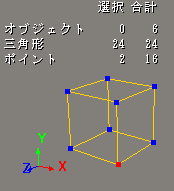
I will have to add a little something to what u said EdTīefore u convert to fbx. Of course, the TXMP needs to be adjusted of the googles and mic, which I did not. Here is a quick example of taking the googles and mic from the Comguy and putting in on the Fury's head.

You can get FBXConverter 2009.3 from here: This will clear the modeling history.Įxport the model as FBX (File/Crosswalk/Export FBX) In the dialog box, unselect the Cameras, Lights and Animation options.Ĭonvert the FBX file to DAE using FBXConverter. Using the CONSTRAIN Panel, click on the PARENT button to set the parent child relationship of the the merged part.įinally, in the EDIT panel, click on the FREEZE button. You see the xyz icon appear, this is the current location of the centerpoint for the merged part.Ĭlick on CENTER on the SELECT Panel, then press V to access the move icon, then move the centerpoint to the correct location. Now click on the merged part and press the V key. Rename the merged part to the name of the original. You will get the dialog box, Merge Meshes. Go to the menu and select Model/Poly.Mesh/Merge you will see the xyz icon at the centerpoint. To see the centerpoint, click on the original object then press V. I'm currently trying to use picturenaut to do this for me, because picturenaut is open source, but unfortunately, right now, picturenaut drops all negative values from my maps :(.Merge parts and export work around tutorial.īefore you merge any parts take note of the location of the centerpoint of the original part, you will need to set the merged part to the same setting. So if you can convert from tif to exr, you can use that for displacement maps. For what I need though, blender seems to be doing pretty well.īlender also has support for 32bit images, but only in the exr format. I would hope that silo does a better job than blender. The only thing that bugs me in this area, is that there is no way to set the z-buffer to draw the low-res, retopo mesh, first and then high-res sculpt, without having the back faces drawn over the high-res too.įeel free to IM me if you have any questions about using blender. What's also nice is that blender can do retopo. For what I'm doing, I can afford to use lower amounts of displacement and get the detail back with normal maps.
Xsi modtools free move windows#
On a windows machine though, the performance is significantly lower. But if you import a base mesh (or a retopo'd mesh), then give it a subdivide modifier, followed by a displace modifier, you could foreseeably divide it up pretty high and get a nice recreation of the original sculpt.

The import and export scripts are written in python though, so moving large meshes with them will always be slow. If you're on a linux machine, then blender might perform quite well for you. So if you rotate a character's head 45 degrees to one side, all his sculpt info will be rotated 45 degrees in the other direction from where his head faces in the new pose. Mudbox stores the sculpt info in object space. If you're wanting to repose your models and then import that new pose into mudbox, you may have problems. It seems to be a real problem when baking my normal maps.Īs for what you're wanting to do, I can see one real issue, but it's a mudbox issue. Right now I'm trying to figure out how I can get smooth normals on an OBJ export from blender. It's a really gorgeous way of automatically generating the mesh weight groups, and I can't live without it now =). The other feature I'm using is the weighting-from-bone heat feature, which is described at the top of that same page. You can read more and understand better here:

Using the old method would cause the arm of a character to shrink when twisting. It calculates the skeletal deformations using quaternion rotations on the verts, instead of finding the average location between all the different places that each bone would move the vert to. Some important features that I'm using right now, are BRAND SPANKING NEW, to blender. I'm currently working on perfecting the n-map bake. This is a model I'm working on in blender, atm:Įarly renders with SSS, 16bit displacement, but no normal maps yet:īlender has support for tangent space normal maps, so I will be making use of those. Interestingly though, I find that blender handles triangles on sub-d models nicely, if you put them in the right places. The problem with blender is that it still doesn't have n-gon support.


 0 kommentar(er)
0 kommentar(er)
